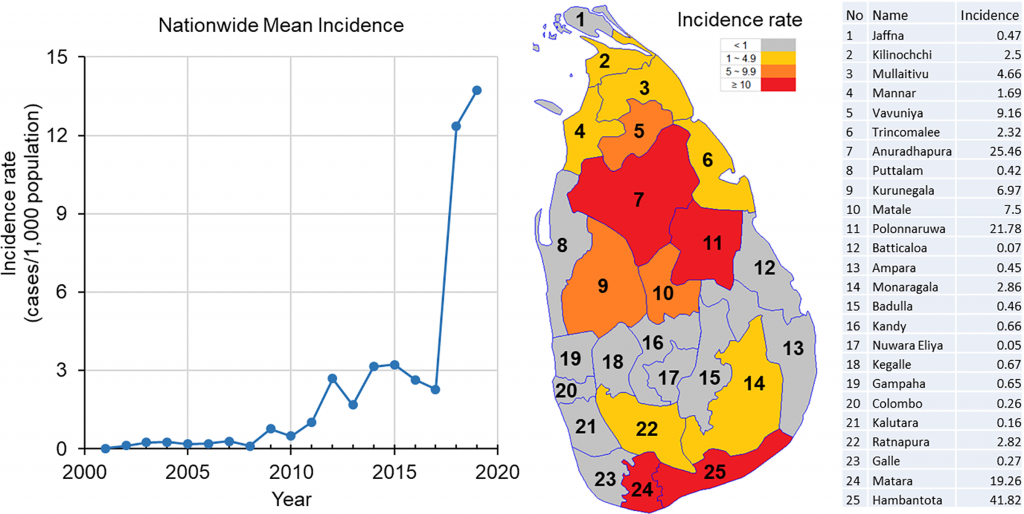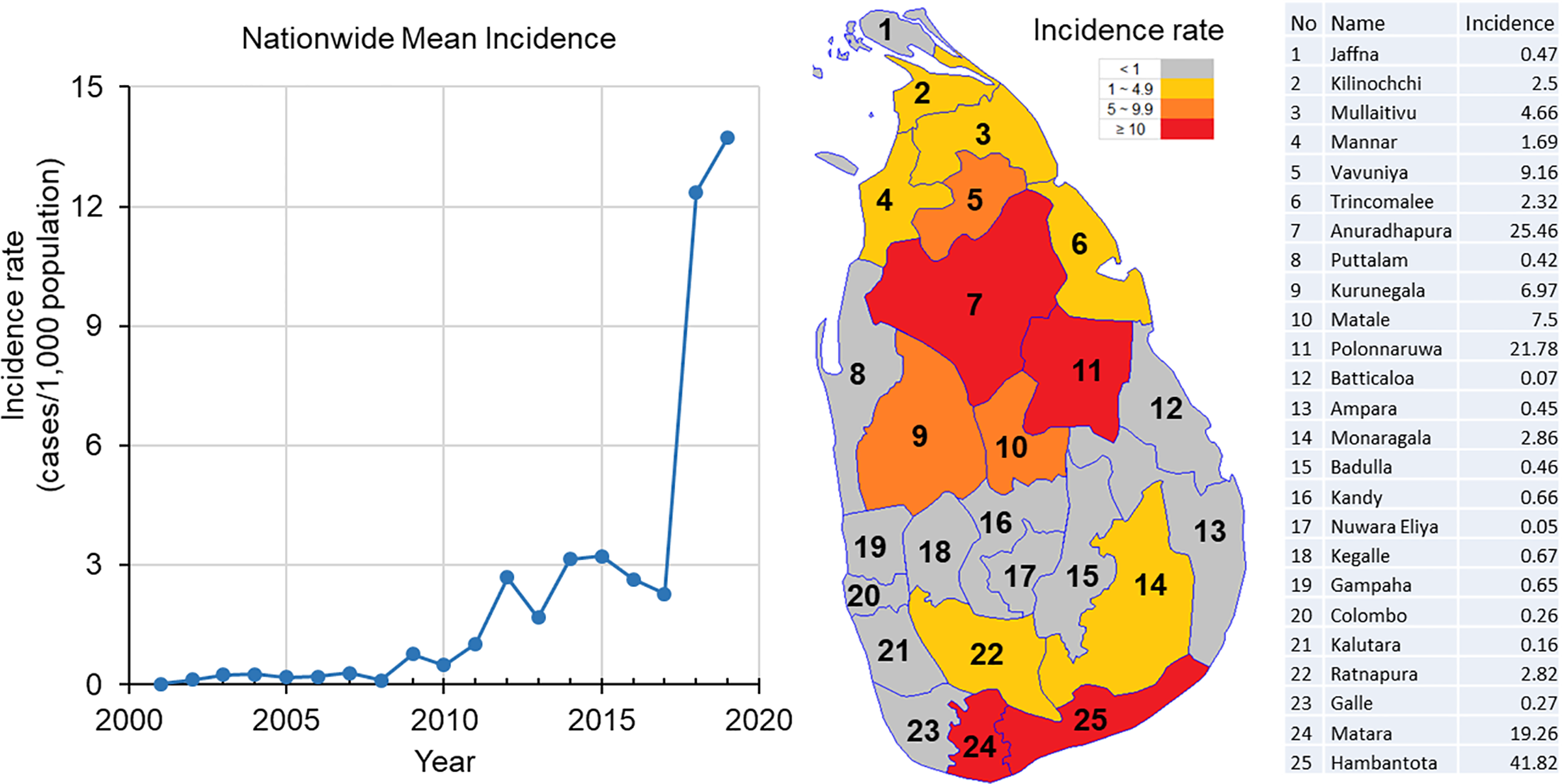 Authors: Nadira D. Karunaweera, Sanath Senanayake, Samitha Ginige, Hermali Silva, Nuwani Manamperi, Nilakshi Samaranayake, Rajika Dewasurendra, Panduka Karunanayake, Deepa Gamage, Nissanka de Silva, Upul Senarath, Guofa Zhou
Authors: Nadira D. Karunaweera, Sanath Senanayake, Samitha Ginige, Hermali Silva, Nuwani Manamperi, Nilakshi Samaranayake, Rajika Dewasurendra, Panduka Karunanayake, Deepa Gamage, Nissanka de Silva, Upul Senarath, Guofa Zhou
Journal: PLoS Negl Trop Dis
Leishmaniasis is on the rise in Sri Lanka in contrast to the declining trend in rest of South Asia. Spatiotemporal analysis and disease risk factors are useful for understanding transmission mechanisms and predicting future disease distribution to facilitate control. In this study we analyzed data on cutaneous leishmaniasis cases from Sri Lanka from 2001 to 2019. We asked three important questions regarding the driving forces behind the intensified leishmaniasis transmission: 1) Are the transmission dynamics in different areas synchronized? 2) What is the role of neighboring-area dispersal in shaping transmission dynamics? 3) How important is climatic variability in transmission dynamics? We used a multi-step approach to answer these questions. In addition to cross-correlation analysis, we built a mixed spatiotemporal regression-autoregression model to analyze risk factors, which is unique in leishmaniasis research because the simplified model was also useful for predicting future disease distribution. We found that the incidence dynamics in different districts could be divided into three synchronized groups based on similarity. Risk factor analysis indicated that precipitation, neighboring-district dispersal, and local infection carryover played important roles in shaping transmission dynamics. The spatiotemporal model predicted intensifying transmission with increasing case numbers, and expansion of high-transmission areas. Targeted interventions are urgently needed to stem the outbreak.


